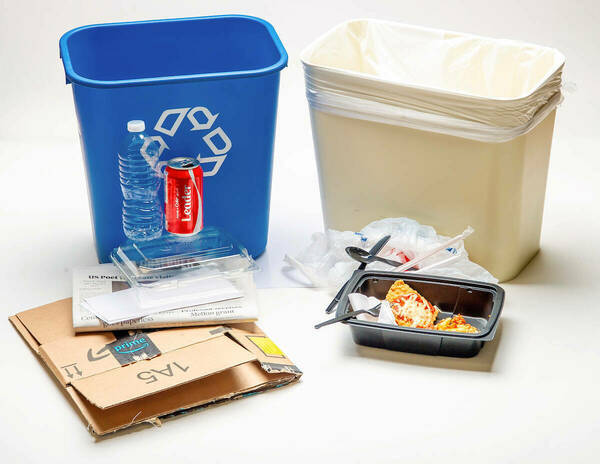
A new year and a fresh perspective cause us to reflect on what’s important in our own lives and as a community. It’s also a chance to renew our commitment to those initiatives by taking the time to familiarize ourselves with the processes that move us toward our common goals.
When it comes to recycling at the University, ongoing changes in industry standards — including the acceptable level of contamination (trash) in recycling bins — demands of us the ability to continually refresh our collective strategy for the campus community and those leading the charge.
Recycling at Notre Dame is a collaborative effort between two Campus Safety and University Operations departments: Building Services and the Office of Sustainability. The success of their efforts depends on faculty, staff, students and visitors on all corners of campus.
“We are committed to a streamlined, efficient recycling program here at Notre Dame. We also acknowledge that things have been tough. World events, like COVID-19 and market changes, have made it difficult to adapt at the regional and campus level,” says Vice President for Campus Safety and University Operations Mike Seamon. “Nation-wide, It has become more difficult to recycle, and that can lead to confusion about our efforts here on campus.”
The good news is: We are still recycling.
“Given the regular industry changes, we’re focusing on what we call a single-stream toter system,” says Chris Hatfield, senior director for Building Services. “This system mimics the residential recycling pickup program you probably use at home. Blue rolling toters — located in most buildings across campus — are picked up on a regular basis, and we rely on all members of the campus community to make sure their loose recyclables make it into that single receptacle.”
Here’s how the toter recycling program works right now.
- Find the blue single-stream recycling toter in your building. Toter locations are listed on the recycling resources webpage. This page also includes instructions for contacting us if you do not yet have a toter.
- You are responsible for emptying your personal recycling bin into the blue toter, making sure your recyclables are loose and free of any plastic bags used for collecting.
-
Use the A-Z directory for the most current and comprehensive information. In general, you can recycle:
- Paper: clean paper including newsprint, envelopes, copy paper, and magazines
- Empty bottles: plastic, aluminum and glass
- Empty cans: aluminum and steel
- Cardboard should be flattened and collected in a gray designated cardboard recycling cart in or outside your building. If you have a large amount of cardboard, submit a work request order to schedule a pickup. Refrain from placing bulky cardboard in the blue toter, as it does not allow enough room for the collection of other recyclables.
“Recycling is just one part of the waste diversion process,” says Geory Kurtzhals, senior director of sustainability. “As individuals, you can make a difference by thinking about waste diversion at the time you make a purchase. If you buy products on behalf of the University, consider what you will do with the item when it has served its purpose. If it will end up in a landfill, consider whether there are alternative options.”
Building Services and the Office of Sustainability continue to work together to review and evolve the campus recycling program in an effort to get the most recyclable materials possible to our recycling partner. As the program evolves, department leaders ask for your feedback during these opportunities to engage with their offices:
- Recycling Listening & Learning Session #1: Tuesday, March 7
- Recycling Listening & Learning Session #2: Wednesday, April 12
Originally published by at ndworks.nd.edu on February 23, 2023.